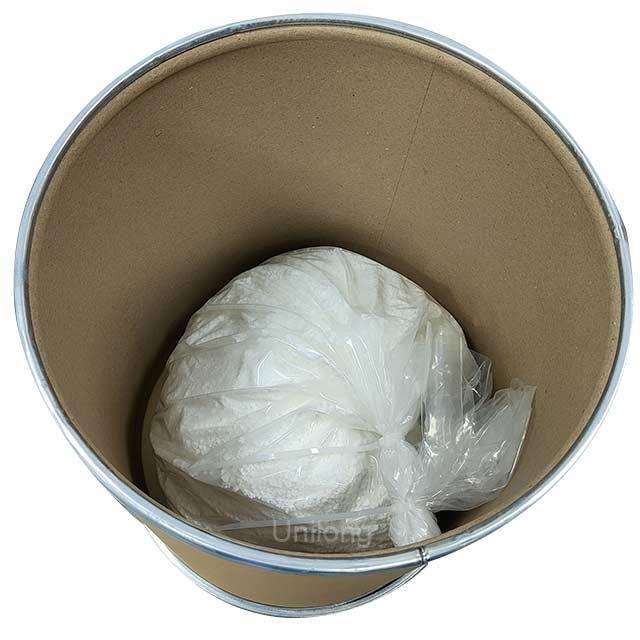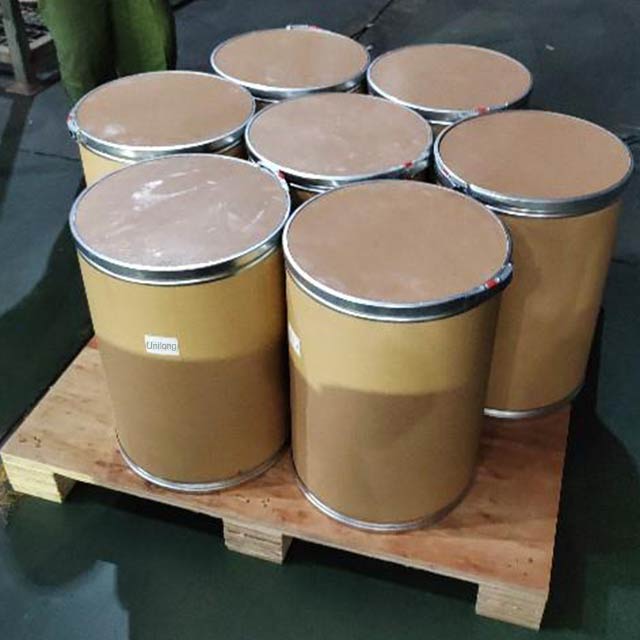Triphosgene CAS 32315-10-9
Triphosgene, also known as bis (trichloromethyl) carbonate, is an organic compound with a CAS number of 32315-10-9. Trisphosgene can be used to synthesize a variety of organic compounds and is an ideal substitute for phosgene. Triphosgene is widely used in the fields of medicine and pesticides. Triphosgene is an important raw material for the synthesis of polymer materials, such as polyurethane foams and polycarbonates.
|
Content ≥, % |
≥99.00 |
|
Water |
≤0.5% |
|
Melting piont |
79-83ºC |
|
Single impurity |
≤0.3% |
|
Total impurities |
≤1.0% |
|
Description |
White to off-white crystalline powder |
1. Pharmaceutical field: Key intermediate for drug synthesis
Triphosgene is a core raw material for the synthesis of various clinical drugs, including antibiotics, antihypertensive drugs, and other medications.
2. Pesticide field: Raw materials for the preparation of highly efficient pesticides
In the synthesis of pesticides, trisphosgene is mainly used to construct the isoactive structure of pesticide molecules, enhancing the insecticidal, herbicidal or fungicidal effects of pesticides. These pesticides exert their functions by inhibiting the cholinesterase activity of pests and have the characteristics of high efficiency and broad-spectrum. Triphosgene can inhibit the photosynthesis of weeds, effectively control broadleaf weeds and gramineous weeds in fields of wheat, corn and other crops, and is relatively safe for crops.
3. Polymer materials field: Important monomers/crosslinking agents in polymerization reactions
Triphosgene can be used as a key raw material for synthesizing high-performance polymer materials, participating in polymerization reactions or crosslinking processes to enhance the performance of the materials.
Polycarbonate (PC) : Triphosgene undergoes A polycondensation reaction with bisphenol A (or other diphenols) to form polycarbonate. PC material features high strength, high light transmittance, impact resistance and other advantages, and is widely used in electronic and electrical appliance casings, automotive parts, optical lenses and other fields.
Polyurethane (PU) : Triphosgene first reacts with polyamines to form isocyanates (or directly serves as crosslinking agents), and then polymerizes with polyols to produce polyurethane. PU materials can be made into foams (such as furniture sponge, car seat foam), elastomers (such as sealing rings, sports shoe soles), coatings (such as automotive paint, furniture paint), etc. Their application scenarios cover multiple industries including building materials, transportation, and home furnishing.
Other polymers: They can also be used to synthesize special polymer materials such as polyurea and polyimide. These materials have properties such as high-temperature resistance and chemical corrosion resistance, and are suitable for high-end fields such as aerospace and electronic information.
4. Organic synthesis field: General reaction reagents
In laboratory and fine chemical synthesis, Triphosgene is a multifunctional reagent that can participate in various organic reactions and is used to construct complex molecular structures:
Cyclization reaction: Triphosgene reacts with diamines, diols, etc. to form cyclic compounds. These cyclic molecules are important precursors for the synthesis of natural products and drug intermediates.
Chlorination reaction: Under specific conditions, triphosgene can be used as a chlorinating agent to chlorinate and modify compounds such as aromatics and olefins, and is used to prepare fine chemical intermediates (such as dye intermediates and fragrance intermediates).
25kgs/drum, 9tons/20’container
25kgs/bag, 20tons/20’container

Triphosgene CAS 32315-10-9

Triphosgene CAS 32315-10-9









![1,5-Diazabicyclo[4.3.0]non-5-ene CAS 3001-72-7](https://cdn.globalso.com/unilongmaterial/15-Diazabicyclo4.3.0non-5-ene-liquid-300x300.jpg)



